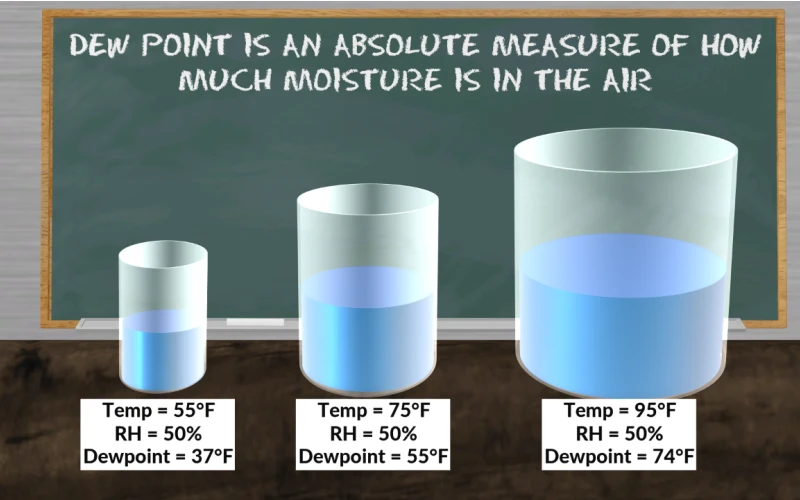
# High Dew Point: Understanding Its Impact on Weather and Comfort
## What Is Dew Point?
Dew point is the temperature at which air becomes saturated with water vapor, leading to condensation. When the dew point is high, it indicates that the air contains a significant amount of moisture. Unlike relative humidity, which changes with temperature, the dew point provides a more consistent measure of atmospheric moisture.
## How High Dew Point Affects Weather
A high dew point often signals uncomfortable and potentially hazardous weather conditions. Here’s how it influences different weather patterns:
### 1. Humid Summers
When dew points rise above 65°F (18°C), the air feels sticky and oppressive. In tropical climates, dew points can exceed 75°F (24°C), making outdoor activities exhausting due to reduced evaporative cooling.
### 2. Thunderstorm Development
High dew points contribute to atmospheric instability, fueling severe thunderstorms. Moisture-rich air rises rapidly, forming towering cumulonimbus clouds that produce heavy rain, lightning, and even tornadoes.
### 3. Fog Formation
Clear nights following humid days often result in fog as temperatures drop to the dew point. This is especially common in valleys and near bodies of water.
## The Comfort Factor: Why High Dew Points Feel Miserable
Human comfort depends heavily on how efficiently our bodies can cool through sweat evaporation. High dew points hinder this process:
– Below 60°F (15°C): Air feels dry and comfortable
– 60-65°F (15-18°C): Slightly humid but generally tolerable
– 65-70°F (18-21°C): Noticeably muggy
– Above 70°F (21°C): Oppressive and potentially dangerous during physical activity
## Measuring and Predicting High Dew Points
Meteorologists use psychrometers or electronic sensors to calculate dew point. Weather apps often display this information alongside temperature and humidity. When planning outdoor events, always check the dew point forecast—it’s a better comfort indicator than relative humidity alone.
## Health Implications of High Dew Point Conditions
Extended exposure to high dew point environments can lead to:
– Heat exhaustion and heat stroke
– Aggravated respiratory conditions
– Increased mold growth indoors
– Reduced sleep quality
Vulnerable populations like the elderly and those with cardiovascular issues should take extra precautions during high dew point periods.
## Adapting to High Dew Point Environments
To stay comfortable when dew points soar:
– Stay hydrated with water and electrolyte-rich drinks
– Wear lightweight, moisture-wicking clothing
– Schedule strenuous activities for cooler morning hours
– Use dehumidifiers in living spaces
– Seek air-conditioned environments during peak heat
Understanding dew point helps us better prepare for weather conditions and maintain comfort during humid periods. By paying attention to this often-overlooked meteorological measurement, we can make more informed decisions about our daily activities and health precautions.
Keyword: high dew point